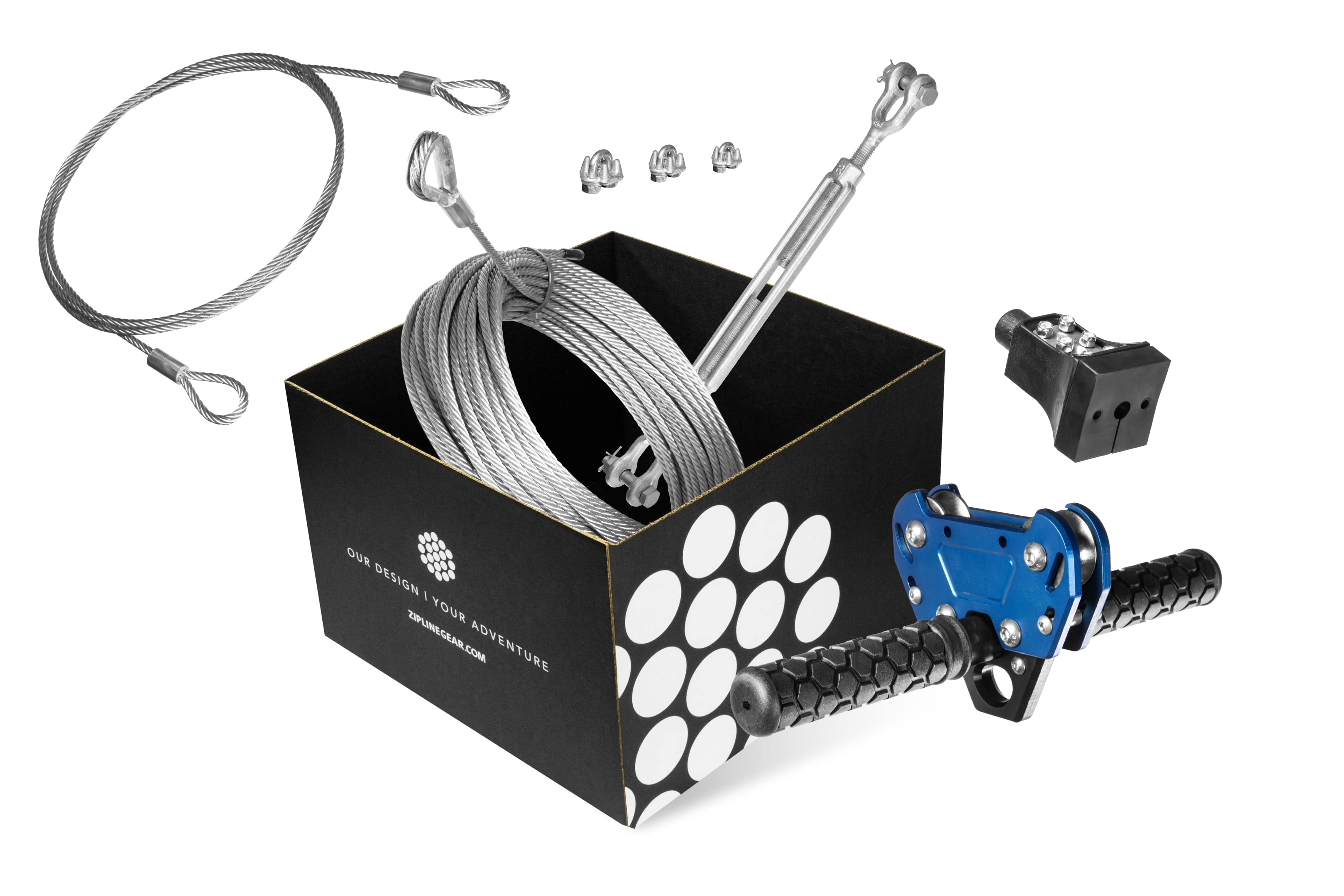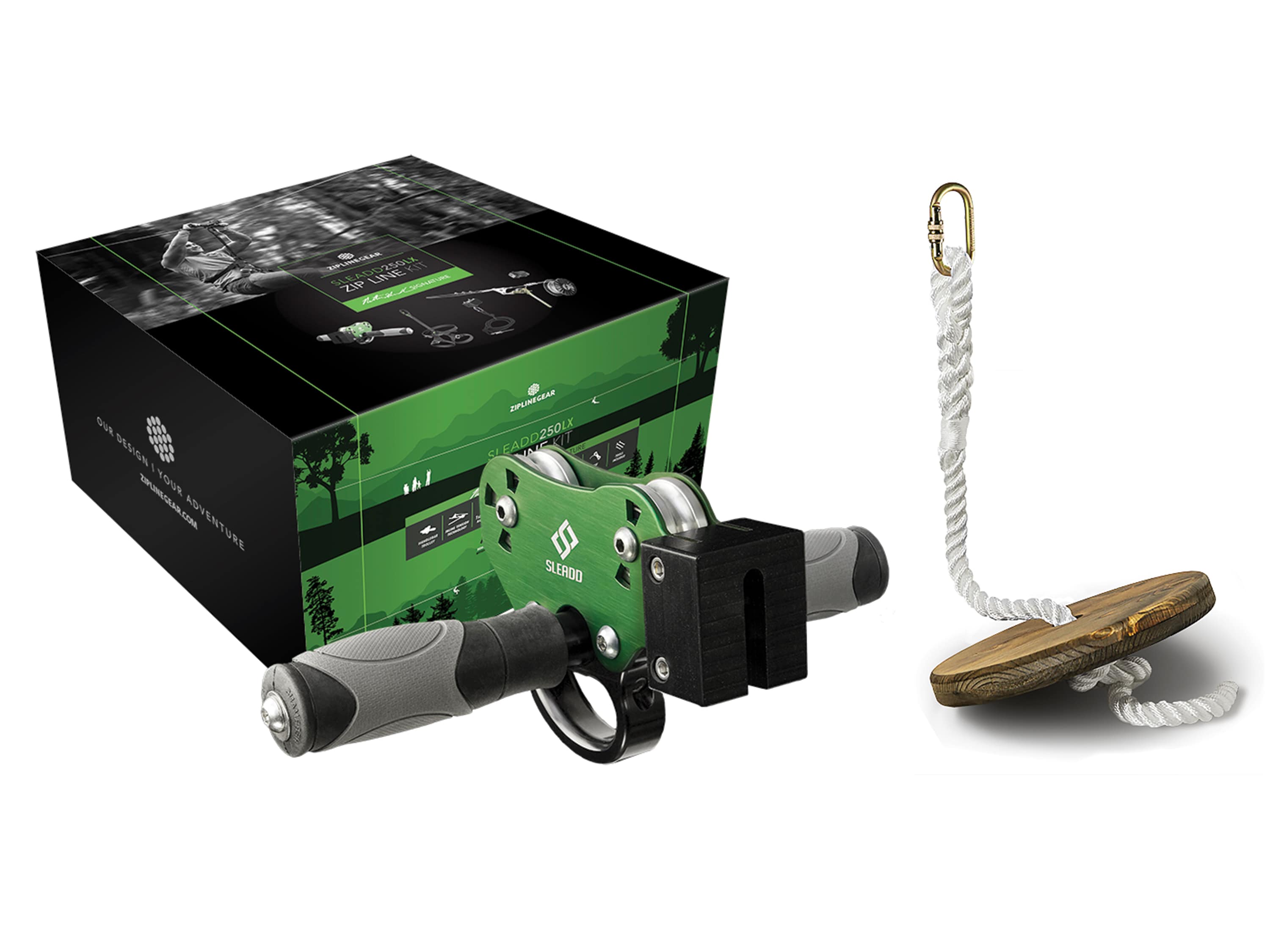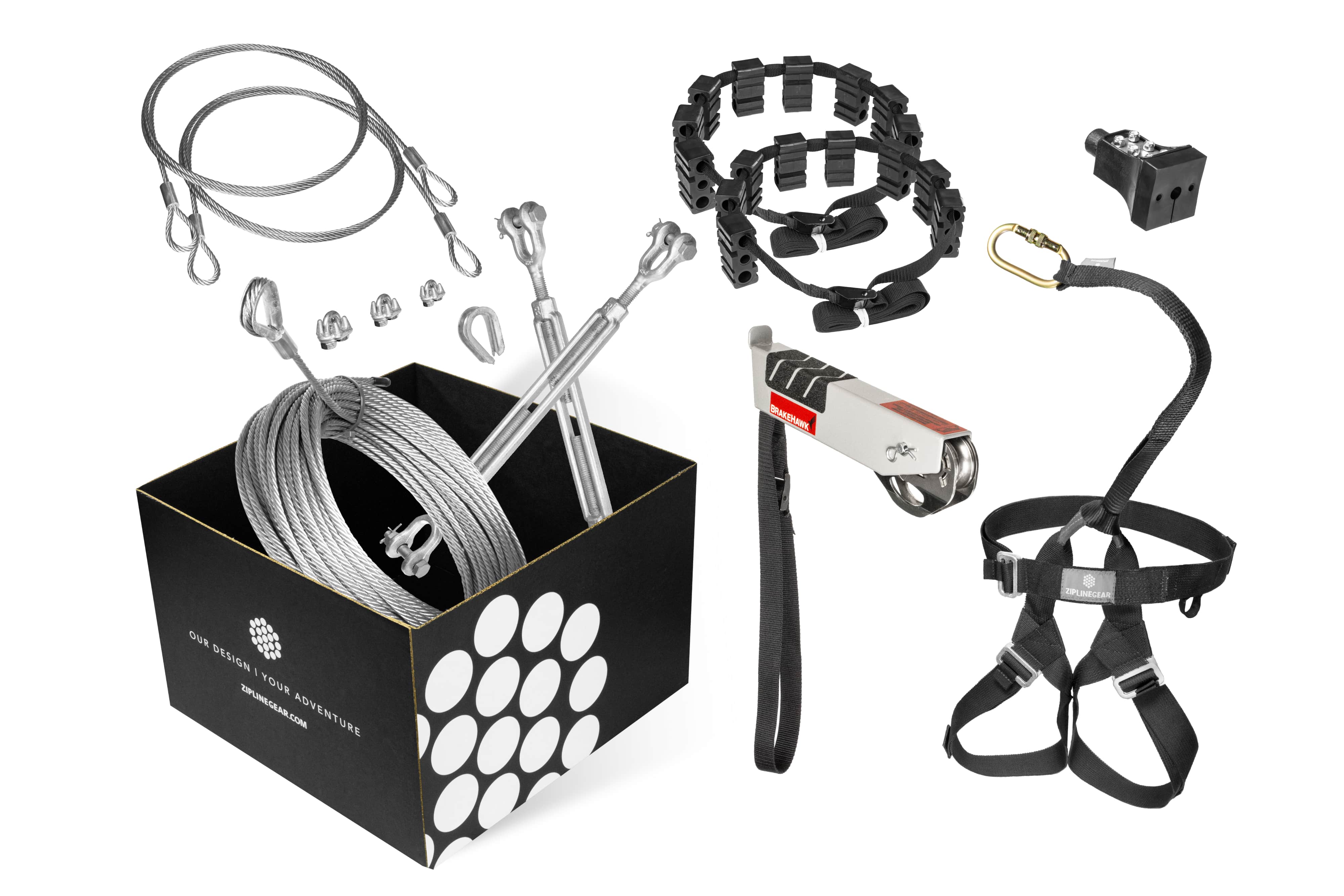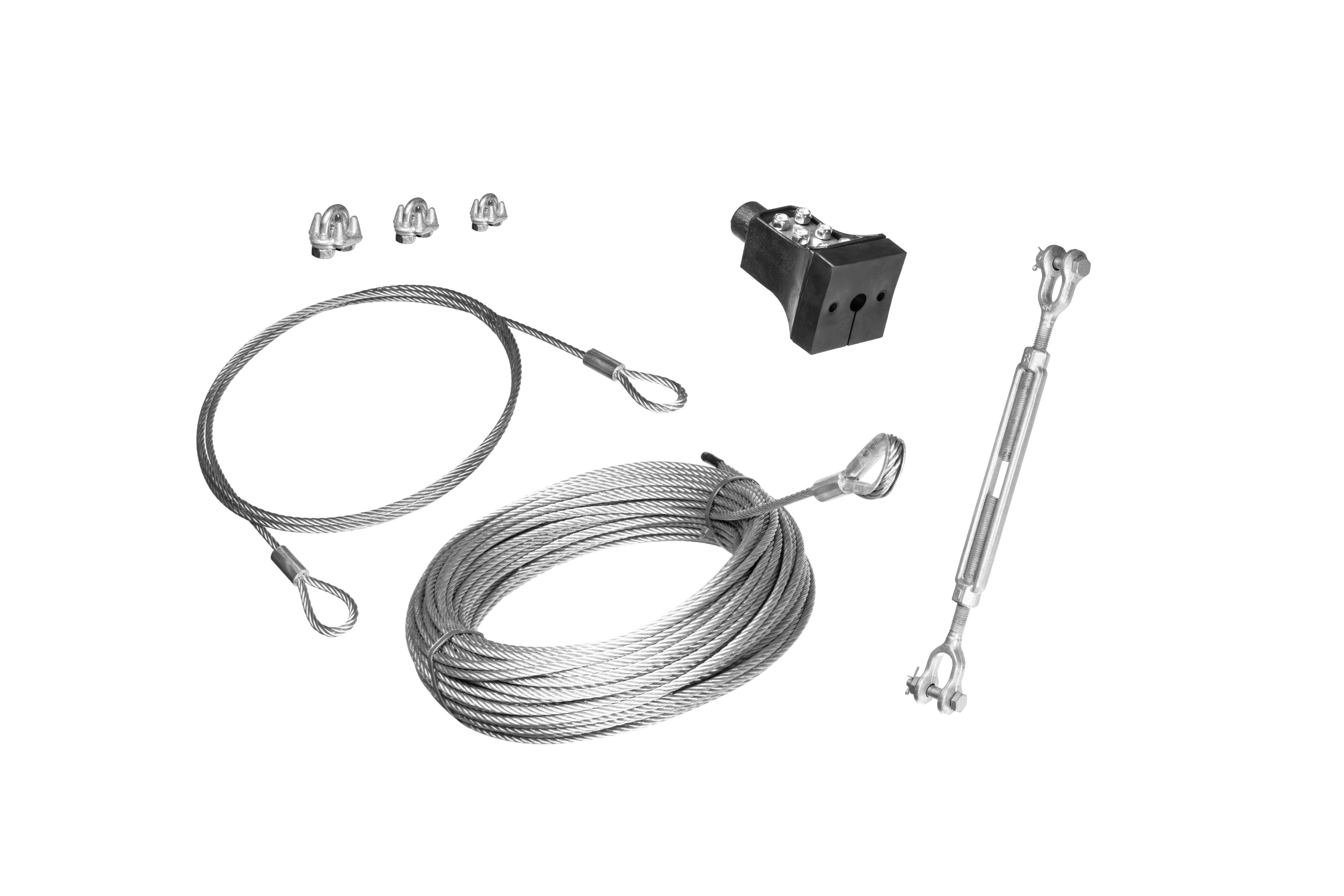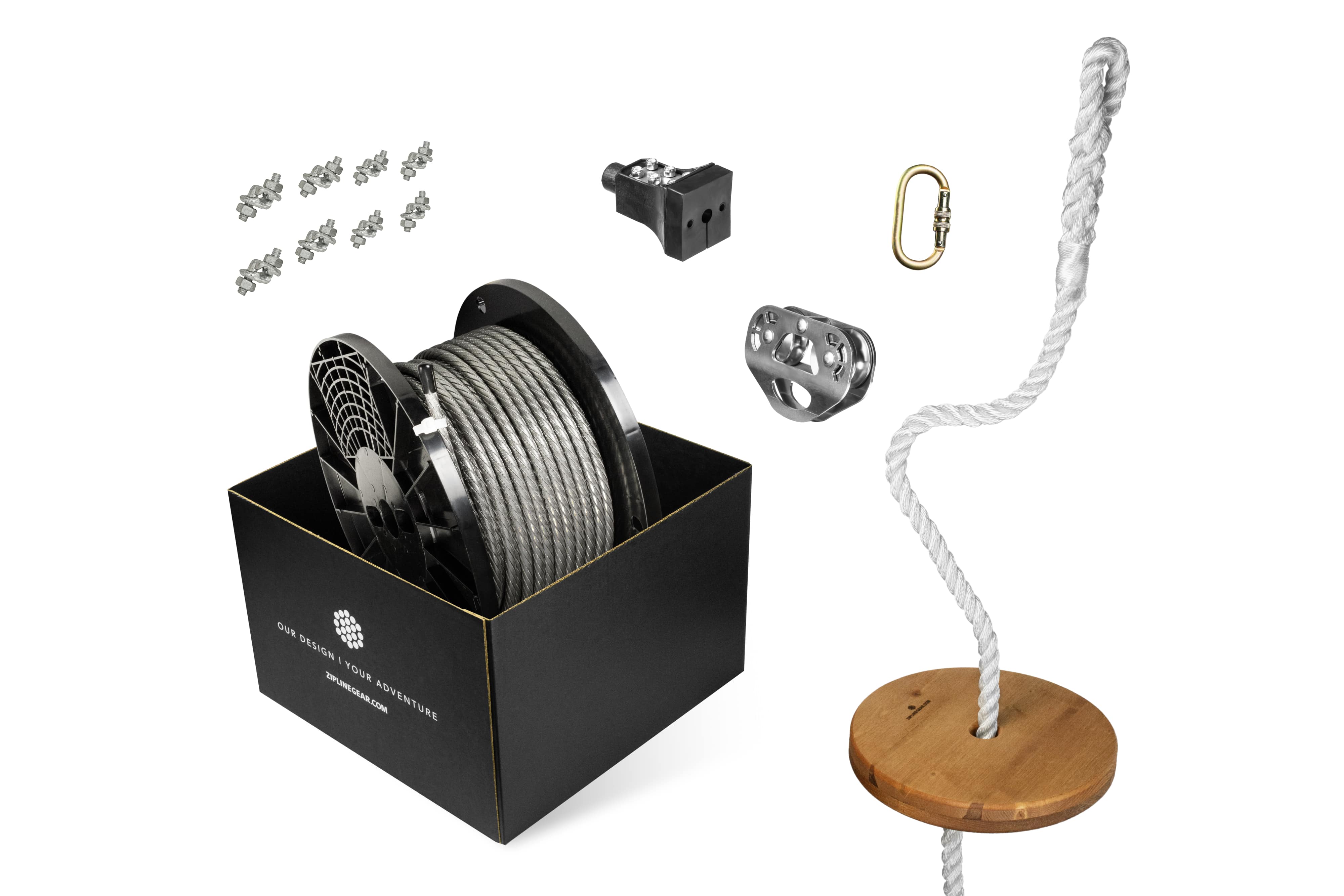How to Tighten a Backyard Zip Line Cable
When setting up a backyard zip line, properly tensioning the cable is essential for safety and functionality. Here, we outline two common methods to achieve the right tension: the Hand-Pull Method and the Cable Grab & Winch Method.
1. Hand-Pull Method
This method is suitable for zip line cables under 100 feet with smaller gauge cable. It relies on manual strength to pull the cable tight and a turnbuckle for fine adjustments.
Steps:
-
Secure the First End: Attach the cable to the first anchor point using a turnbuckle.
-
Stretch the Cable: Pull the cable across the span, wrapping it around the second anchor (e.g., a tree).
-
Set a Temporary Hold: Loosely secure the cable by assembling a single cable clamp where the cable crosses back over itself.
-
Pull Tight by Hand: Pull the cable as tight as possible, then secure the cable clamp.
-
Add More Clamps: Add two more clamps near the anchor for additional security.
-
Tighten with Turnbuckle: Use the turnbuckle to adjust the cable to the desired tension.
For added pulling power, create a loop at the cable’s end using a single cable clamp. Attach a rope ratchet strap or another pulling device for leverage.
2. Cable Grab & Winch Method
This is the most common method for zip line installations, especially for longer cables or when more tension is required.
Steps:
-
Secure the First End: Attach the cable to the first anchor point.
-
Attach the Cable Grab: Place the cable grab directly onto the cable.
-
Use a Winch or Come-Along: Connect a winch or come-along to the cable grab and pull the cable tight.
-
Anchor the Second End: While the cable is tensioned, secure it to the second anchor using clamps.
-
Repeat if Necessary: If additional tensioning is required, temporarily secure the cable, extend the winch or come-along outward, and repeat.
For longer spans, consider using a second cable grab for a “hand-over-hand” approach, where one grab holds tension while the other repositions for further pulling.
Safety Tips
-
Always follow the manufacturer’s instructions for your zip line kit.
-
Never tighten a zip line cable past the manufacturer’s minimum sag specification. If your kit does not have a minimum sag specification, send it back to Amazon and buy a kit from someone who cares about your safety.
With these methods, you can safely and effectively tighten your backyard zip line cable, ensuring it’s ready for fun and adventure!
- Choosing a selection results in a full page refresh.
